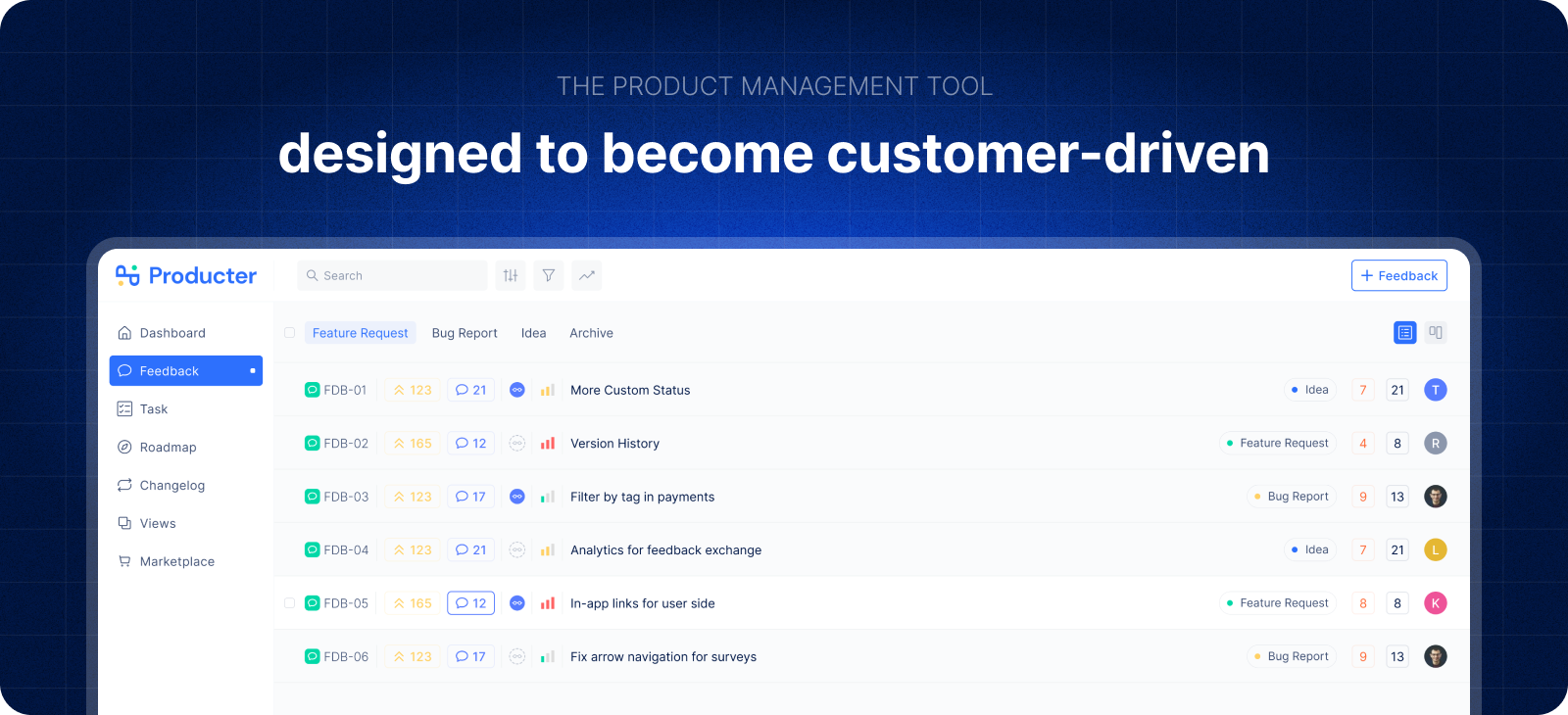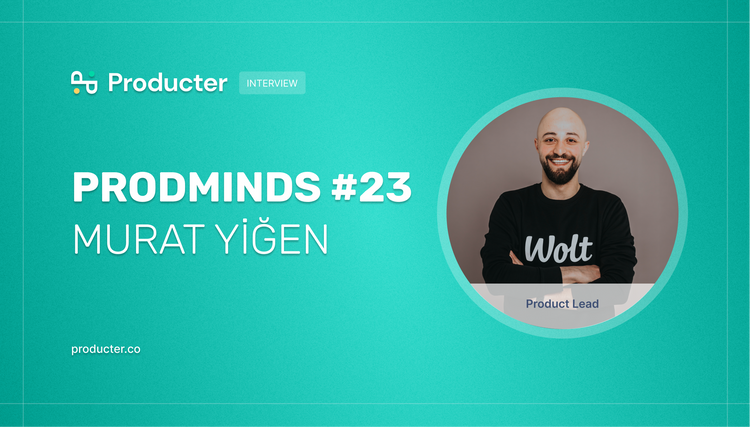ProdMinds is an interview series featuring product minds around the world.
Team Producter: Would you tell us a bit about you and your career path in product management?
Lena: Like most product managers, I fell into the wild world of product management by accident. After studying Economics at university, I worked in customer service and operations at a small startup for a few years where I ended up doing some data analysis projects for the CEO. I decided I wanted to become a data analyst and even did a Microsoft Excel certification to add to my resume.
Unexpectedly in early 2017, I bumped into a friend from university who was a recruiter at the time and was hiring for a Business Analyst role at a large Fintech company. I remember almost shooting her down saying “that sounds cool, but I have my heart set on becoming a Data Analyst.” She laughed and told me a Business Analyst was quite similar and that I should at least apply so I could have options.
I went home later that day and went online to find out what a Business Analyst was and realized it would open more doors than a Data Analyst role would.
A few weeks later, I got my first job in tech working as a Business Analyst in a small startup-like team within a large Fintech org. I got the ride of a lifetime — I got to ship a brand new enterprise Fintech product to three customers in the first year, I learned how to code a little bit in JavaScript to help ship features to production (we were really low on resources), and learned how to work with developers to build awesome software.
A year into my role as Business Analyst, I was sitting in my boss’s office trying to solve a bunch of production issues as usual when he asked me: “do you want to be a Product Manager?” I looked at him blankly. “I haven’t heard of it before, what is it?” We didn’t have any Product Managers at the company yet, only Business Analysts and Project Managers.
My boss told me a Product Manager was a visionary — someone who decides the future direction of a product and makes sure it’s a success. He also said he thought I’d be good at it.
Again, I went home and looked online to see what this mysterious role was. And I was thrilled to find out it was the ultimate interdisciplinary role where you work with both people and software. It felt like the exact type of role I’d been looking for in my career.
A few weeks later, I was promoted to Product Manager and started working closer with my boss to decide on where to take the product over the next few months and built out a roadmap.
The biggest change I experienced when moving from Business Analyst to Product Manager was an increased sense of accountability. I started to believe in our product even more than before and felt extremely emotionally invested in the product. It was a feeling I’d been yearning for my whole career up until that point.
Team Producter: Which part of being a Product Owner is the most challenging for you?
Lena: Definitely learning to manage my own psychology when there’s pressure and things don’t go the way I planned. It can feel very disheartening when you experience delays in software development or directional changes from leadership that impact your plan. Being flexible is extremely important because as a product manager, there are always unknowns and you’re constantly thrown curveballs.
It’s also challenging being responsible for the outcomes of your team (and the product) yet not having direct authority over the people on your team. Your software developers don’t have to listen to you. They’ll only listen if you find the right way to explain your vision and convince them your ideas are going to work. Even when, again, there is uncertainty and you don’t know for sure. The market can be extremely unpredictable.
The best product managers are able to have conviction despite a level of uncertainty. And are transparent and graceful when their ideas fail. They’re empathetic leaders who show others it’s okay to be wrong as long as you made the best decisions given the information you had.
Team Producter: Customer discovery is one of the most vital steps in the entire product development process. What factors do you consider when defining your target group during the discovery phase?
Lena: Talking to customers directly or making sure you find the right proxies to get customer insights from to support your decision-making. So many product managers ship features and products they think are going to work in their head without validating this is what customers want.
Something that’s helped me define my target group is paying attention to the product adoption curve — who are my technologists and my early adopters? Sometimes a product idea doesn’t resonate simply because you’re talking to the right people at the wrong time.
Customers in the early or late majority just don’t embrace risk in the same way technologists and early adopters do. And they won’t help bring your product to market. You need to find those early visionaries who are so desperate to make a splash in the market that they’re willing to deal with bugs or go after the wrong product at times if it means being the first to pioneer something.
Team Producter: How does product-led growth strategy help companies? What companies should benefit from it since one size does not fit all?
One size definitely doesn’t fit all but I think a product-led growth strategy can be used by more companies than we might initially think. Product-led doesn’t always mean a free trial or a freemium product, which often isn’t possible for enterprise software.
Product-led can mean a focus on personalized onboarding that pushes the user to discover the value of the product sooner. And onboarding can happen even at the stage of a user reading the landing page of a new product.
This is where working closely with your product marketers and marketers can help you identify a product-led growth strategy that works for your company.
Team Producter: How do you think departmental silos affect product companies? In what ways do you build and maintain relationships with stakeholders from different teams?
Lena: Departmental silos (and silos within individual departments) are one of the biggest issues in product companies in my experience. Communication and alignment seems to always be at the root of any issue — missed market opportunities by the product, inefficiencies in onboarding, delays in shipping features. It all comes down to not working in concert together to ship a product.
My secret weapon to maintaining relationships with my stakeholders and different teams is over-communication and full transparency. When you’re open about what you’re doing (the good and the bad) and always have an open communication channel, not only do you better align people, but you encourage them to communicate more with you, too.
The key is to make your stakeholders and individuals from different teams feel encouraged to approach you about their deepest fears and worries. You need these inputs so you can keep a pulse on what’s going on, how everyone’s feeling, and when there’s misalignment.
One final tip is to try to get to a point where your stakeholders feel like they can talk to you like a friend. Don’t feel like you have to always speak extremely formally and appear to have everything together all the time. Always be respectful, of course, but don’t be afraid to be human. That way, others feel they can be human with you too and that’s where true relationship-building happens.
Team Producter: When it comes to listening to your users, what’s your method? Is their input considered in critical product decisions?
Lena: I always default to customer interviews. I’ll happily do surveys too or employ social listening, but there’s nothing like a 1:1 conversation with a customer to really get a feel for what they care about. The beauty of conversations is that they flow — you end up in places you otherwise wouldn’t with a survey that has a finite number of questions (and therefore responses.)
Customer insights are found in the most unexpected places. It could be an activity a customer does that seems completely unrelated that shows you exactly why they care about your product (or don’t.) And what you need to do to create and convey the value of your product to them.
Customer input is 100% critical to product decisions. But you need to be careful! Customers love to complain about their problems — we all do! Sometimes they get emotional over a problem because they got triggered. Not because it’s truly a big problem.
That’s why I use anchoring, a concept coined by Rob Fitzpatrick, author of The Mom Test (my bible for talking to customers), to decipher whether a customer truly cares about a problem or if they’re just venting. Anchoring forces you to ask questions that focus on:
- The past (“When was the last time you experienced that?”),
- How frequently the problem occurs (“How often does this happen?”), and
- What the consequence is of not solving the problem (“What happens as a result of you not solving this problem?”)
These questions are key to uncovering whether the problem is painful enough for the customer to want to pay for a solution to fix it.
And pretty much everything in Rob Fitzpatrick’s book The Mom Test is gold and will teach you how to talk to customers effectively. :)
Producter is a product management tool designed to become customer-driven.
It helps you create collect feedback, manage tasks, sharing product updates, creating product docs, and tracking roadmap.

You may also like:








